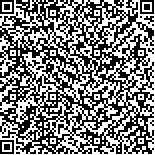巩尊科,王世雁,王蜜,王旭霞,陈伟,盛超.磁共振波谱与洛文斯顿认知评定量表在脑卒中后认知功能评定中的相关性分析[J].中华物理医学与康复杂志,2018,40(6):436-440
扫码阅读全文

|
| 磁共振波谱与洛文斯顿认知评定量表在脑卒中后认知功能评定中的相关性分析 |
|
| |
| DOI: |
| 中文关键词: 脑卒中 认知障碍 磁共振波谱 洛文斯顿作业疗法认知量表 |
| 英文关键词: Stroke Cognitive impairment Magnetic resonance spectra Loewenstein occupational therapy cognitive assessment |
| 基金项目:江苏省临床医学科技专项基金(BL2013007) |
|
| 摘要点击次数: 5634 |
| 全文下载次数: 6280 |
| 中文摘要: |
| 目的 探讨脑卒中后认知障碍患者磁共振波谱(MRS)与洛文斯顿认知评定量表评分的相关性,分析其临床意义。 方法 采用简易精神状态检查量表(MMSE)筛查脑卒中认知障碍患者30例(认知障碍组)和脑卒中无明显认知障碍患者30例(卒中对照组),另选30例健康志愿者作为健康对照组。3组间性别、年龄、文化程度、病程等一般资料均相匹配,3组均行MRS检查及LOTCA评定,比较3组评定结果,分析MRS与LOTCA相关性。 结果 ①认知障碍组LOTCA总分及各项评分均低于卒中对照组和健康对照组(P<0.05),卒中对照组LOTCA总分及定向力、空间知觉、视运动组织、思维运作各项评分低于健康对照组(P<0.05),而视知觉和动作运用评分低于健康对照组,但差异无统计学意义(P>0.05)。②认知障碍组双侧海马区NAA/Cr低于卒中对照组和健康对照组(P<0.05),双侧海马区Cho/Cr高于卒中对照组和健康对照组(P<0.05),卒中对照组双侧海马区NAA/Cr低于健康对照组(P<0.05),双侧海马区Cho/Cr高于健康对照组(P<0.05)。③左侧海马区NAA/Cr与LOTCA总分、各分项及注意力评分呈低至中度正相关(r=0.376~0.661,P<0.05);右侧海马区NAA/Cr与LOTCA总分、各分项及注意力呈低至中度正相关(r=0.396~0.691,P<0.05);左侧海马区Cho/Cr与LOTCA总分及各分项呈低至中度负相关(r=-0.368~-0.619,P<0.05),与注意力无明显相关性(r=-0.312,P>0.05);右侧海马区Cho/Cr与LOTCA总分及定向力、视知觉、视运动组织及思维运作呈低至中度负相关(r=-0.391~-0.632,P<0.05),与空间知觉、动作运用及注意力无明显相关性(r=-0.263,r=-0.339,r=-0.219,P>0.05)。 结论 MRS用于评定脑卒中患者的认知功能可有效鉴别认知障碍的存在,MRS与LOTCA评分具有相关性,两者结合能更全面和客观地评价认知功能障碍。 |
| 英文摘要: |
| Objective To explore the cognitive impairment of stroke survivors using magnetic resonance spectra (MRS) and the Loewenstein occupational therapy cognitive assessment (LOTCA), and to analyze their correlation and their clinical significance. Methods Thirty stroke survivors diagnosed with cognitive impairment using the mini-mental state examination formed a cognitive impairment group. Another 30 stroke survivors without cognitive impairment served as stroke controls, while a third group of 30 healthy counterparts were the normal controls. All were assessed using magnetic resonance imaging and the LOTCA and the results were correlated. Results The average LOTCA total score and sub-scores of the impaired group were significantly lower than those of the other two groups. The average LOTCA total scores and the orientation and spatial perception, apparent motion and thinking operation sub-scores of the stroke control group were also significantly lower than those of the normal control group, though their average visual perception and motor praxis scores were not. The average levels of N-acetyl aspartate and creatine (NAA and Cr) in the bilateral hippocampus of the cognitively impaired group were significantly lower than among the controls, while their choline and creatine (Cho/Cr) levels were significantly higher. The average NAA/Cr and Cho/Cr levels in the bilateral hippocampus of the stroke control group were similarly significantly lower and higher than among the healthy controls. The average NAA/Cr levels in the left and right hippocampus were weakly to moderately correlated with the total LOTCA scores and the LOTCA sub-score for attention (r=0.376-0.661 and r=0.396-0.691 respectively). The average value of Cho/Cr in the left hippocampus showed weak to moderate negative correlation with the LOTCA total scores (r=-0.368-0.619), but not with the attention scores. The value of Cho/Cr in the right hippocampus had weak to moderate negative correlation with the LOTCA total score and with the orientation, visual perception, visuo-motor organization and thinking operations sub-scores (r=-0.391-0.632), but no obvious correlation with the scores for spatial perception, motor praxis or attention. Conclusion MRS can be used to assess the cognitive impairment of stroke survivors. MRS and LOTCA scores are closely correlated. MRS combined with LOTCA can evaluate cognitive dysfunction more comprehensively and objectively. |
|
查看全文
查看/发表评论 下载PDF阅读器 |
| 关闭 |
|
|
|